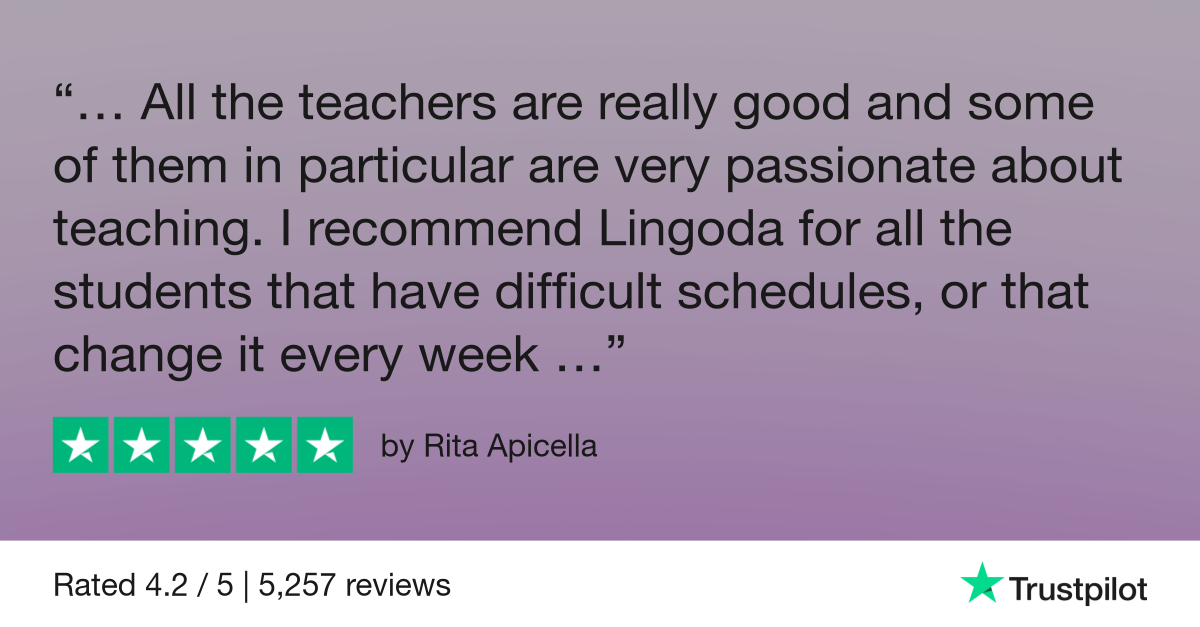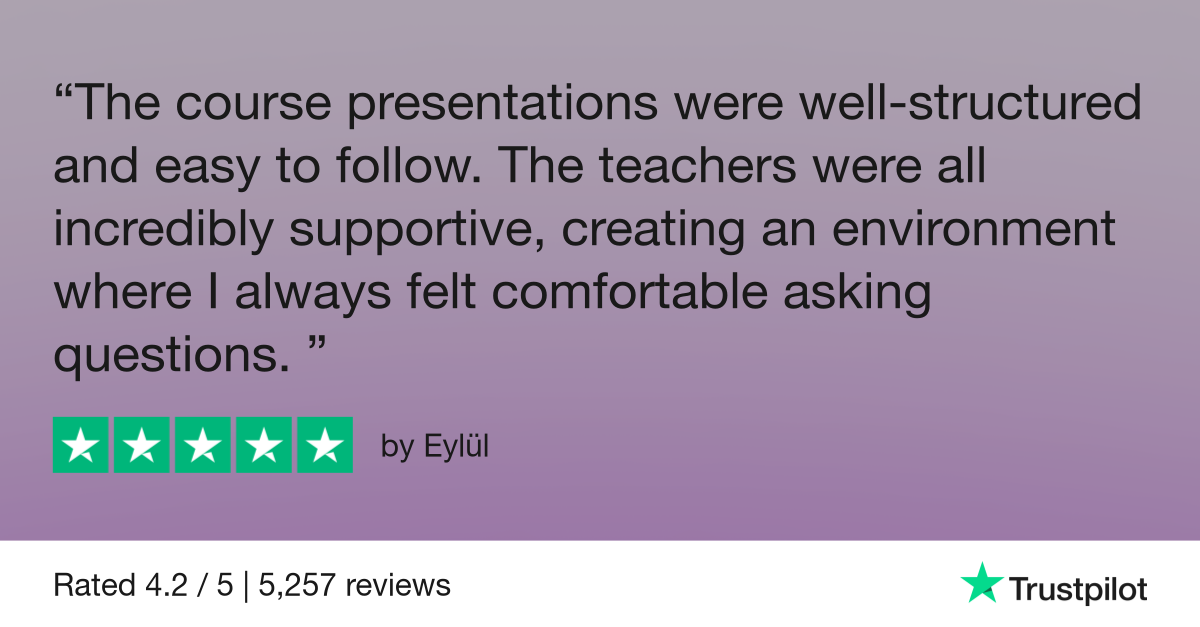Published on April 3, 2025

Spanish transition words: What are they and how do we use them?

Spanish transition words are an essential part of Spanish grammar. Just like Spanish prepositions and other connecting words, these words help us establish logical links between different elements in a text, such as paragraphs, sentences and other syntactic groups.
Why is it important to learn them? Well, mastering the most common Spanish transition words will significantly boost your language skills. By using them, we develop a natural flow to our written and spoken communication. Whether we are looking to write a smooth work email or confidently engage in small talk in Spanish, these simple words help us guide our audience through our ideas with ease.
So, let’s dive into what transition words are and the purpose they serve. We’ll also take a look at some examples to get a better grasp on the topic. Let’s go!
- What are Spanish connecting words and transition words?
- Categories of Spanish transition words
- How to master Spanish transition words
- Bonus: Advanced transition phrases
What are Spanish connecting words and transition words?
Spanish connecting words are tools that create links between words, paragraphs and sentences. Transition words are a subtype of connecting words that act as bridges between ideas or arguments. They help the speaker transition from one sentence to the next in a coherent and natural way.
Transition words are crucial for cohesion. They facilitate comprehension. Without them, our texts and speech can come across as choppy or impersonal. This affects our ability to communicate effectively and engage our audience’s attention (even if our spelling and grammar are impeccable). In fact, they’re so essential that we can find equivalents in all languages, including English.
English vs. Spanish transition words
To illustrate what these connecting words are all about, let’s compare some Spanish and English transition words:
| English | Spanish |
| additionally | además |
| as a result | como resultado |
| as a consequence of | como consecuencia de |
| for example | por ejemplo |
| for this reason | por esta razón |
| furthermore | además |
| meanwhile | mientras tanto |
| nevertheless | sin embargo |
| soon | pronto |
| therefore | por lo tanto |
| to summarize | en resumen |
Now, imagine if we didn’t use transition words in English:
- With a transition word: I don’t think I’ll know anyone at the party. Nevertheless, I’ll still come (No creo que vaya a conocer a alguien en la fiesta. Sin embargo, sí iré).
- Without a transition word: I don’t think I’ll know anyone at the party. I’ll still come (No creo que vaya a conocer a alguien en la fiesta. Sí iré).
It feels disjointed without the transition word, right? The same is true in Spanish.
Categories of Spanish transition words
Spanish transition words allow us to contrast, expand and explain ideas. Let’s break them down into categories according to their use:
Transition words for time (chronology)
These let you connect ideas in relation to the time they occur. They’re particularly useful, for instance, when giving a chronicle, telling an anecdote or even writing a recipe.
Here are some common examples:
| Español | Inglés |
| al final | in the end |
| al mismo tiempo | at the same time |
| después | afterwards |
| entonces | then |
| finalmente | finally/lastly |
| inmediatamente | immediately |
| en resumen | in short |
| mientras/mientras tanto | meanwhile |
| primero/primeramente | first/firstly |
| pronto | soon |
| todavía | still |
| ya | already |
| luego | then/next/later |
This is how we can use some of them in a sentence:
- Primero, iremos al cine. Después, a cenar (First, we’ll go to the cinema. Then, to dinner).
- Lorena es estudiante de medicina; pronto será doctora (Lorena is a medical student; soon, she’ll be a doctor).
- Finalmente, agregamos la leche (Lastly, we add the milk).
What our students of Spanish say
Transition words for adding or expanding ideas
Looking to add context or introduce another detail? Check out these transition words:
| Spanish | English |
| además | furthermore, additionally, plus |
| asimismo | similarly |
| igualmente/de igual manera | likewise |
| por otro lado | on the other hand |
| también | also, as well |
| y | and |
- No sé si tengo ganas de salir esta noche. Además, mañana me levanto temprano (I’m not sure I feel like going out tonight. Plus, I’m getting up early tomorrow).
- Me lastimé el pie y me corté la mano (I hurt my foot and I cut my hand).
Transition words for explaining and giving examples
These words allow us to explain what we just said:
| Spanish | English |
| entre ellos/ellas | including |
| en otras palabras | in other words |
| es decir | that is to say, that is |
| por ejemplo | for example |
| ya que | since |
- Me gustan los deportes en el exterior. Por ejemplo, el tenis y el golf (I like outdoors sports. For example, tennis and golf).
- Los conectores nos ayudan a darle coherencia a la estructura de un enunciado. Es decir, a darle lógica (Connectors help us give coherence to a sentence structure. That is to say, to give it logic).
Note: These words come in particularly handy in academic contexts, since they are used to support our arguments. However, be careful not to overuse them or your content may become redundant.
Transition words for contrasting and comparing ideas
These help us compare ideas, objects or people:
| Spanish | English |
| aunque | although, while |
| a pesar de | despite |
| en cambio | on the other hand |
| como | like |
| por el contrario/otro lado | by contrast |
| pero | but |
| sino | but |
| sin embargo | however, nevertheless |
| no obstante | nevertheless |
| aun así | still, nevertheless |
- Romina siempre se viste de verde, pero hoy se vistió de azul (Romina always wears green, but today she is dressed in blue).
- Las plantas no recibieron agua por varios días; no obstante, sobrevivieron (the plants weren’t given water for many days; nevertheless, they survived).
Note: Due to their elevated tone, some of these transition words are especially common in formal writing. They are less common in casual conversations. Some examples are: no obstante, por el contrario, sin embargo.
These words sound quite formal, so reserve them for written communication and speaking in official capacities. That could include giving a business presentation, an academic speech, or reading a written statement to an audience.
Transition words for cause and effect relationships
These words are also known as ‘transition words for results’. We use them to introduce the cause or the consequence of an action:
| Spanish | English |
| así | thus |
| así que | so |
| dado/ya que | given that |
| como consecuencia de | as a consequence of |
| como resultado | as a result |
| por consiguiente | therefore |
| por esta razón | for this reason |
| por lo tanto | therefore |
| por eso | therefore |
- No me siento bien hoy, así que no podré ir a tu reunión (I’m not feeling well today, so I won’t be able to come to your get-together).
- Hervir la mezcla puede alterar los sabores. Por lo tanto, hay que prestar atención a la temperatura (Boiling the mixture could alter the flavors. Therefore, we must pay attention to the temperature).
Note: These words can also be useful when presenting the conclusion of an argument or attempting to persuade an audience about something.
This includes value judgments.
–El uso de la Inteligencia Artificial puede ser nocivo para el medio ambiente. Por esta razón, es importante que la usemos con cuidado (The use of Artificial Intelligence can be detrimental to the environment. For this reason, it’s important that we use it carefully).
Transition words for conclusions and summarizing
If you’re looking to summarize an argument or make a concluding statement, you can use one of these words:
| Spanish | English |
| después de todo | after all |
| en conclusión | in conclusion |
| en general | in general |
| en resumen | in short |
| finalmente | lastly |
| para concluir | to conclude |
| para resumir | to summarize |
| para terminar | to finish |
- En resumen, aprender un nuevo idioma te abrirá puertas tanto en tu carrera como en tu vida personal (To summarize, learning a new language will open new doors for you both in your career and your personal life).
- Finalmente, agregamos coco rallado para decorar (Lastly, we add grated coconut as decoration).
There you have some of the most common transition words in Spanish. It’s probably clear, by now, how they are used. The next step is incorporating them into your daily language. Want to practice using them in real-life conversations? Join our immersive, small-group classes at Lingoda and start learning Spanish online today.

Learn Spanish with Lingoda
How it works

How to master Spanish transition words?
These are some of the best ways to learn new vocabulary:
- Read news articles, books and blogs in Spanish: Pay attention to all the transition words you come across. How are they used? In what context? Use each structure to create your own examples.
- Use learning apps: Sign up for Anki or Duolingo and practice during your free time. Turn that long commute into an opportunity!
- Practice with discourse scrambles: Find a paragraph that uses transition words, break it apart and try to put it back together in the correct order.
Bonus: Advanced transition phrases
Now we are familiar with some of the most common transition words in Spanish. Ready to take it a step further? Here are some advanced constructions that work as transitions, but they are longer.
A transition phrase works the same as a transition word in Spanish, except it uses a combination of words rather than just one or two. These phrases can also be considered colloquialisms AKA idioms. You may hear slight variations depending on what Spanish-speaking country you visit.
These full phrases will have you speaking Spanish like a pro:
- Vale la pena señalar que… – It is worth pointing out that…
- De vez en cuando… – From time to time…
- Por lo que concierne a [X]… – As far as [X] is concerned…
- Hay que recalcar que… – It must be highlighted that…
- Cabe mencionar que… – It’s worth noting that…
- No debemos olvidar que… – We must not forget that…
Use Spanish transition words to get speaking!
Spanish transition words play a crucial role in written and spoken communication. They help us connect ideas by establishing contrasts, cause-and-effect relationships and timelines. Mastering them will give our language skills a serious boost, keeping our audience engaged and allowing us to communicate effectively.
At Lingoda, our native-level teachers will guide you through all things transition words and much, much more. Plus, with our flexible schedule, you can start learning right away! You’ll be speaking Spanish with confidence before you know it. We promise.

Learn Spanish with Lingoda
How it works

















